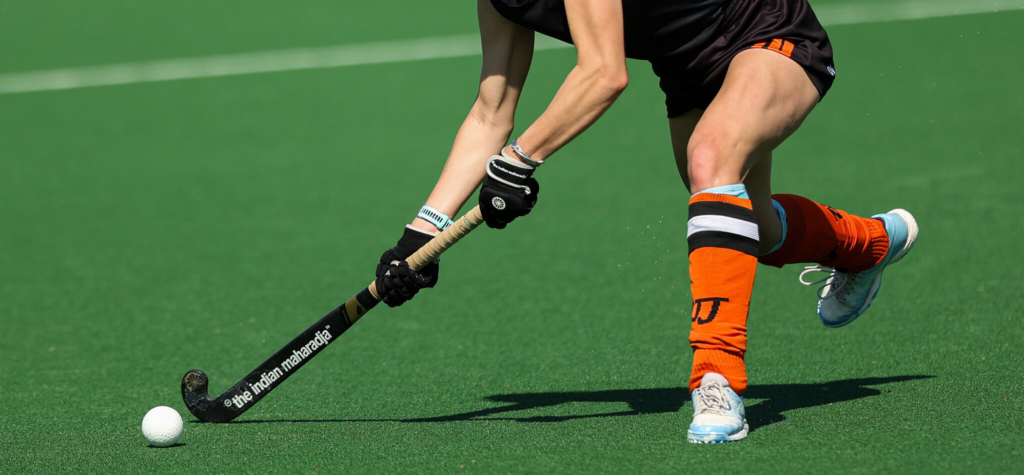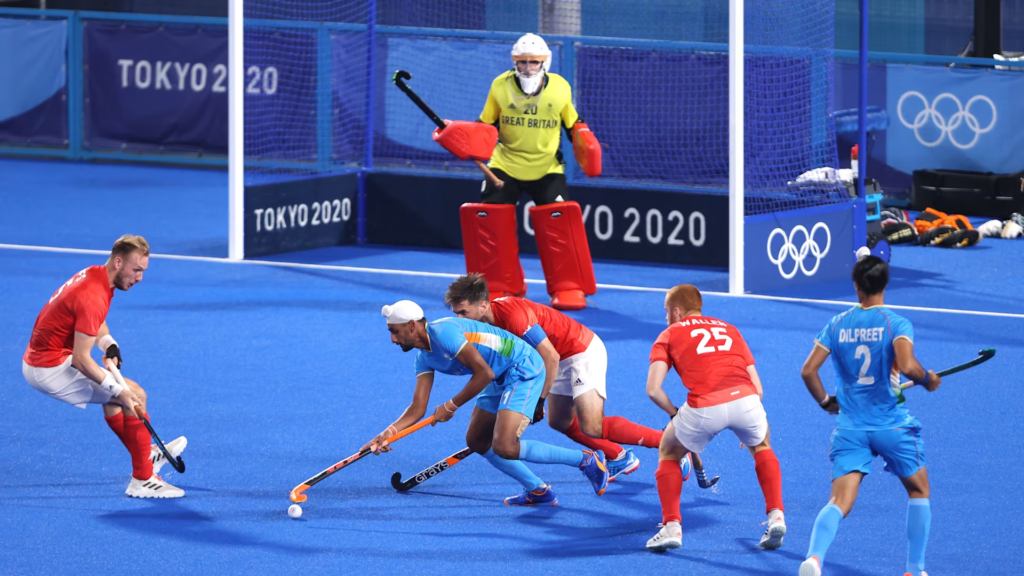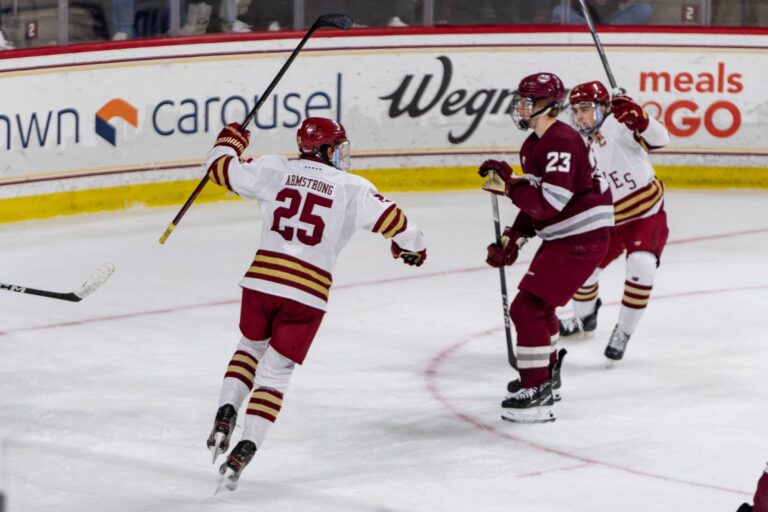Field hockey, a sport with roots dating back to ancient civilizations, is played by millions of people worldwide. The game’s fast pace, skillful techniques, and physical demands necessitate that players equip themselves with the right apparel to enhance their performance and ensure safety.
Whether you are a novice or an experienced player, understanding the essentials of field hockey apparel is crucial. This blog post will delve into the must-have items every player needs, from head to toe, to perform at their best on the field.
Headgear and Protective Eyewear
Safety starts from the top, and for field hockey players, headgear and protective eyewear are critical, especially in youth and amateur leagues where regulations often mandate their use.
- Headgear: Although head injuries are not as common in field hockey as in some other sports, they can still occur. Wearing a lightweight helmet, particularly for goalkeepers, can prevent concussions and other head injuries. Field hockey helmets are designed to offer maximum protection while not impeding the player’s vision or movement.
- Protective Eyewear: Goggles or protective glasses are essential to safeguard players’ eyes from high-speed balls and sticks. Modern protective eyewear is made with polycarbonate lenses, offering durability and clear vision. Some models even use anti-fog and scratch-resistant coatings to enhance performance in various weather conditions.
Mouthguards
A mouthguard is arguably one of the most critical pieces of protective equipment in field hockey. They protect the teeth, gums, and jaw from impacts and collisions, which are common in a fast-paced, physical game.
When choosing a mouthguard, consider the following:
- Fit: A properly fitted mouthguard should stay in place comfortably and allow for easy breathing and speaking.
- Material: Look for mouthguards made from durable, shock-absorbent materials.
- Customization: Custom-fitted mouthguards, often provided by dentists, offer the best protection and comfort but can be more expensive than off-the-shelf options.
Shin Guards

Field hockey shin guards protect the lower legs from sticks and balls. They are designed to cover the shin bone and often extend to protect the ankles and calves.
Key Features to Consider:
- Size and Fit: Properly fitting shin guards should cover the entire shin and stay securely in place during movement.
- Material: High-density foam and plastic shells provide excellent protection and durability.
- Ventilation: Look for shin guards with ventilation channels to keep legs cool and dry during play.
Gloves
Field hockey gloves protect players’ hands from impact injuries and abrasions while enhancing grip on the stick.
Types of Gloves:
- Full-Finger Gloves: Provide maximum protection, ideal for defensive players and those prone to hand injuries.
- Half-Finger Gloves: Offer a balance between protection and flexibility, allowing better stick handling and feel.
Features to Look For:
- Padding: Sufficient padding on the back of the hand and fingers to absorb impacts.
- Grip: Textured or tacky surfaces on the palm to improve grip in various weather conditions.
- Fit: Snug but comfortable, ensuring full range of motion without slipping.
Jerseys and Shorts
Field hockey uniforms consist of a jersey and shorts, designed to be lightweight, breathable, and durable.
Jersey:
- Material: Moisture-wicking fabrics such as polyester or blends to keep players dry and comfortable.
- Fit: Should be slightly loose to allow for movement but not so baggy that it gets in the way.
- Design: Depending on team regulations, jerseys often feature the team’s colors and logos, and may include the player’s number and name.
Shorts:
- Material: Similar to jerseys, shorts should be made from breathable, moisture-wicking materials.
- Fit: Comfortably snug around the waist with an elastic or adjustable waistband, and allowing full range of motion for running and stretching.
Socks
Field hockey socks are long, often reaching up to the knee, to cover and secure the shin guards.
Considerations:
- Material: Moisture-wicking and breathable fabrics to prevent blisters and keep feet dry.
- Compression: Some players prefer compression socks for added support and improved blood circulation.
- Durability: Reinforced toe and heel areas to withstand the rigors of the sport.
Footwear

Choosing the right footwear is crucial for optimal performance and injury prevention. Field hockey shoes should offer excellent grip, support, and comfort.
Types of Field Hockey Shoes:
- Turf Shoes: Designed for artificial turf surfaces, featuring numerous small rubber studs for traction.
- Cleats: For natural grass fields, these shoes have larger studs or cleats to provide grip on softer surfaces.
- Indoor Shoes: Smooth-soled shoes designed for indoor hockey, offering traction on gym floors.
Key Features:
- Fit: Shoes should fit snugly without being too tight, providing support and stability.
- Cushioning: Adequate cushioning to absorb impact and reduce stress on joints.
- Durability: Sturdy materials to withstand the wear and tear of the game.
Base Layers and Outerwear
Base layers and outerwear can be essential additions to a field hockey player’s wardrobe depending on the weather and playing conditions.
Base Layers:
- Compression Tops and Shorts: Provide muscle support, improve circulation, and help regulate body temperature.
- Thermal Layers: For colder weather, thermal tops and leggings keep players warm without restricting movement.
Outerwear:
- Jackets and Hoodies: Lightweight, breathable, and water-resistant options for warming up or playing in inclement weather.
- Rain Gear: Waterproof jackets and pants to stay dry during rainy matches.
Additional Accessories
Several additional accessories can enhance a player’s comfort and performance on the field.
- Headbands and Sweatbands: Keep sweat out of the eyes and improve comfort during intense play.
- Sports Bras: A well-fitted sports bra provides support and comfort for female players during high-intensity activities.
- Backpacks and Gear Bags: Durable bags to carry all equipment and apparel, often with specialized compartments for sticks, shoes, and accessories.
Conclusion

In field hockey, the right apparel can significantly affect a player’s performance and safety. Each piece of equipment plays a crucial role, from headgear and protective eyewear to specialized footwear and outerwear.
Investing in high-quality, well-fitting gear ensures players can focus on their game confidently and comfortably. Whether stepping onto the field for the first time or being a seasoned player, ensure your kit includes these essential items to stay protected and perform at your best.

